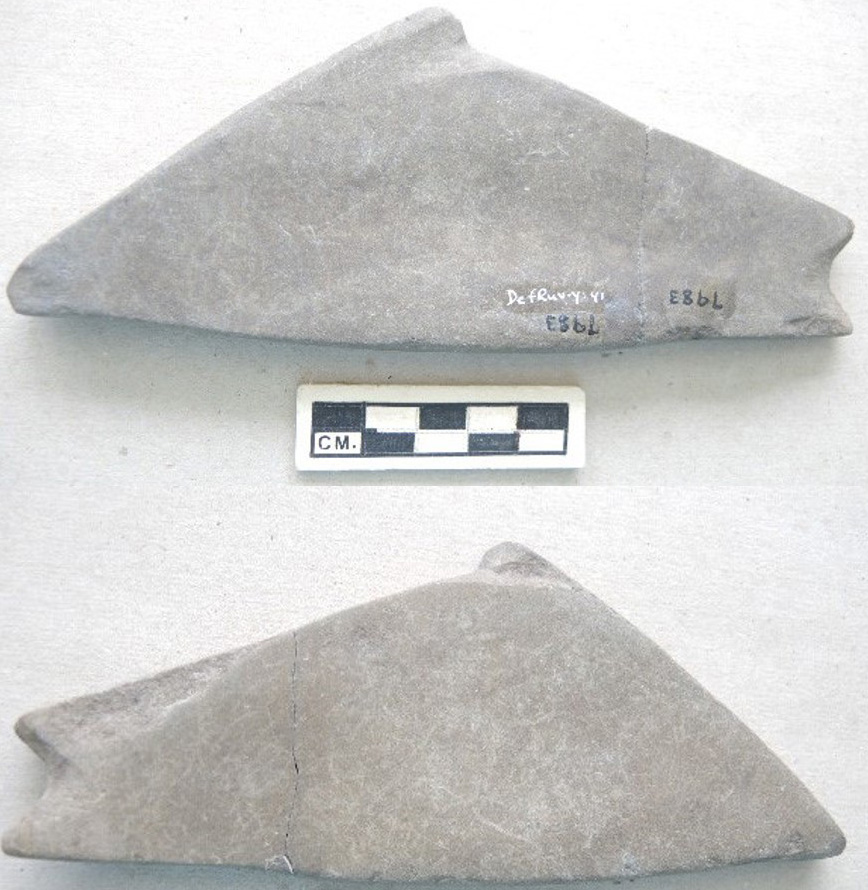One of the most common artifacts found in archaeological site on the southern coast of British Columbia are abrading stones. These were used for grinding or abrading in the shaping or sharpening tools made of bone, shell and antler. They were used in shaping ornaments and grinding pigments.
Abrading stones come in many shapes and sizes, were made of different raw materials, and like modern sandpaper, they came in many grain sizes. By far, most are made of sandstone and are plain slabs of rectangular, square or irregular shapes. A small number are especially shaped in the form of animals, usually whales or fish. It is these I am interested in here.
Figure 1, shows two sides of a sandstone abrader (RBCM DefRuv-Y:41) that came from the general area around Fulford Harbour on Saltspring Island.

We would assume there is a particular reason for these animal shapes. Given that they were usually of great age and there are no historic counterparts to their use, indigenous people could not provide answers as to what they represented. However, the extensive stories recorded from Indigenous elders over the last one hundred and fifty years can often reveal some important knowledge of likely uses of some of these carved abraders.
In traditional Indigenous societies fishing included the use of songs and prayers acquired in dreams or supernatural experiences. The best fisherman had these secret incantations. Some became wealthy and gained a reputation for having specialized power to catch one kind of fish such as halibut, cod or herring.
“Once a Nanaimo man dreamed that he could catch something fierce. Soon after his dream, as he was fishing, something jerked on his line and took it to the bottom of the sea. When he pulled the line up, he found at the end a stone shaped like a fish. He took the stone fish home and that night he dreamed that it spoke to him, telling him that he was to catch all the fish he wanted, and that, when his luck was poor, all he had to do was to rub his hook with the stone fish. He kept the stone for many years wrapped up in a hidden box. He grew wealthy, and when he was an old man, he again had a dream in which the stone fish instructed him to paint the stone in a certain way and to put it back into the water where he caught it. He did so and, and as it was released, the stone acted like acted like lightning” (Barnett 1955).
Figure 2, shows both sides of two broken abraders that are likely fish heads. The upper left is from the False Narrows shellmidden site (DgRw-4:305) on Gabriola Island in the Nanaimo region. It dates somewhere in the last 1000 years.

Figure 3, shows two abraders ground into the shape of orcas. Pender Islands Museum. DeRt-2.


Figure 4. Whale shaped abrader from the Cordova Bay area. RBCM DdRu-Y:106.
Reference
Barnett, Homer G. 1955. The Coast Salish of British Columbia. University of Oregon, Eugene Oregon. The University Press.